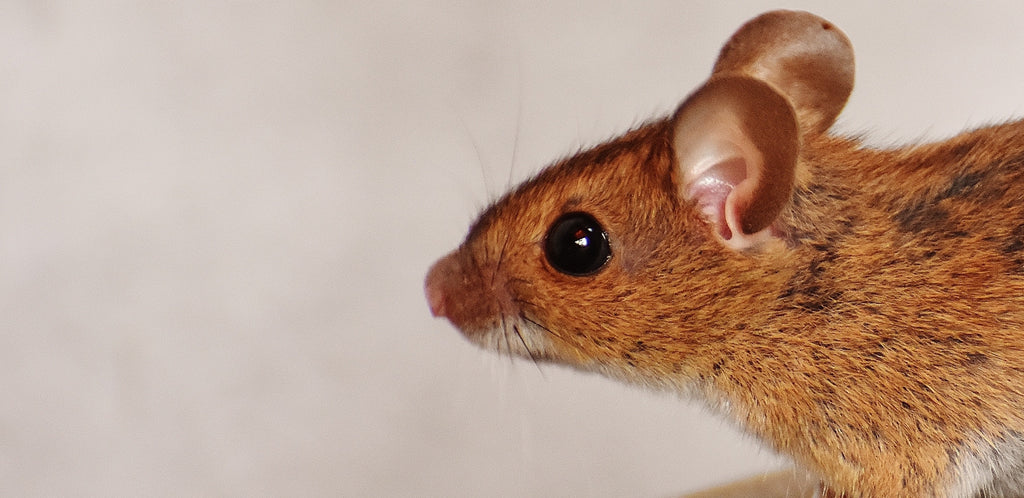Get Rid of Mice and Rats in 4 Easy Steps

Let's face it...discovering rats or mice in your home or business sucks. After all, rodents are amongst the filthiest animals in the world, responsible for spreading all sorts of diseases, damaging structures, impacting foods, and so much more. Fortunately, getting rid of your rodents quickly can be accomplished by following a very specific process. If you need additional assistance, please check out Professor Pest's Live Online Chat for free, real-time guidance from a rodent control expert.
Eliminate Rats & Mice in 4 Easy Steps...
Step 1: Indoor Rodent Trapping & Removal
 Of course you don't WANT to do this, but there is rarely a way around it. The first step in the process is immediately eliminating any existing populations of rats or mice inside the structure. And the BEST way to accomplish this is through strategic implementation of a combination of rodent trap devices. For mice, start with a combination of snap trap devices and glue board sticky traps in proximity to where you think they may be nesting, along runways, and near potential sources of food. Use lots and lots of traps. How many? That depends on the extent of your particular infestation, but when dealing with mice, more is always more. 20+ mouse trap devices is probably a good starting point in most situations.
Of course you don't WANT to do this, but there is rarely a way around it. The first step in the process is immediately eliminating any existing populations of rats or mice inside the structure. And the BEST way to accomplish this is through strategic implementation of a combination of rodent trap devices. For mice, start with a combination of snap trap devices and glue board sticky traps in proximity to where you think they may be nesting, along runways, and near potential sources of food. Use lots and lots of traps. How many? That depends on the extent of your particular infestation, but when dealing with mice, more is always more. 20+ mouse trap devices is probably a good starting point in most situations.
Mice are commonly found in residential kitchens, and it's always a good idea to begin with a comprehensive inspection to see if a nest can be located. Be sure to look in cabinets and pantries where food items are stored, as well as beneath and behind appliances such as ovens or refrigerators. Before starting to move things around and disturb the area, consider placing several glue board sticky traps on the floor so as to catch scurrying mice in the event they begin to scatter.
For rats, start by pre-baiting a series of snap traps with raisins or other dried fruits or nuts. During the pre-baiting period (typically 3-5 days), you will place unset, baited traps in the environment to allow the rats to be accustomed to feeding. Once you've established feeding, you can then set the traps. As with mice, be aggressive in your rat trapping approach in order to try to knock out the entire active population with the first round of trapping. Depending on their connectivity to the outdoors, that may or may not be possible.
When placing rat traps, pay attention to indicators as to where they may be nesting, entering, traveling, burrowing, gnawing, and feeding and look to place traps in proximity to these area. In attics, runways may include along utility lines or other conduits which may include grease marks or rub stains from the bodies of rats. You may also notice burrow holes in insulation that provide an indication as to their travel routes.
Step 2: Outdoor Rodent Reduction (Rodent Baiting / Poisoning)
 After the interior population of rats and mice have seemingly been eliminated, it's time to turn up the intensity outside the home. (In some instances of heavy interior rodent activity, exterior baiting for rats and mice may begin at the same time as the interior trapping). Remember, the mice and rats inside the structure are coming from the environment outside. So while the short-term rodent relief is brought about through interior trapping and removal, long-term rodent relief will be brought about by efforts on the outside.
After the interior population of rats and mice have seemingly been eliminated, it's time to turn up the intensity outside the home. (In some instances of heavy interior rodent activity, exterior baiting for rats and mice may begin at the same time as the interior trapping). Remember, the mice and rats inside the structure are coming from the environment outside. So while the short-term rodent relief is brought about through interior trapping and removal, long-term rodent relief will be brought about by efforts on the outside.
Rodent baiting is designed to eliminate active populations of rats and mice in the environment around your home in the immediate term and prevent them from regenerating their populations over time. A properly executed rodent reduction program includes strategic placement of rodenticides in a way that intercepts newly introduced rats and mice as a means of population control. By maintaining low or non-existing levels of rodents around the exterior, the likelihood of rodent intrusion inside the structure becomes significantly less.
Rodenticides (rodent baits / poisons) come in many different formulations for use in different applications. In most environments, rodenticide bait blocks housed in tamper-resistant bait stations may be an ideal baiting option. Keep in mind that rodent baits are generally sold separately from the bait stations they will need to be housed in. Make sure that the rodenticide you choose fits properly inside your bait station of choice. Some bait stations have built-in anchors that prevent tampering from children or pets. Others may need to be secured for safety purposes.
Step 3: Habitat Modification
 By now you've eliminated the rats and mice inside the structure and have established an active rodent reduction program around the exterior. You can now turn your attention to improving the environment outside the building so as to make it minimally hospitable to future populations of rats or mice. Pay special attention to keeping trees, bushes, and shrubs adequately trimmed so they do not come in direct contact with the home. Eliminate any piles of trash, wood, or other debris that might be on the property. These areas might serve as ideal nesting habitats for rodents.
By now you've eliminated the rats and mice inside the structure and have established an active rodent reduction program around the exterior. You can now turn your attention to improving the environment outside the building so as to make it minimally hospitable to future populations of rats or mice. Pay special attention to keeping trees, bushes, and shrubs adequately trimmed so they do not come in direct contact with the home. Eliminate any piles of trash, wood, or other debris that might be on the property. These areas might serve as ideal nesting habitats for rodents.
Step 4: Rodent Exclusion / Seal Entry Points
 The final step in your rodent elimination and reduction program will be to perform a comprehensive inspection of the property, identifying any areas that could conceivably become points of entry for mice or rats. Remember, mice might squeeze through openings about the size of a dime, so even the smallest compromise should be addressed. During your inspection you may find that some of the areas are too large-scale to handle on your own. If that's the case, consider consulting a general contractor or handyman to assist with your project. Some rodent removal companies also specialize in exclusion work as well, and are able to assist with all parts of the remedial process.
The final step in your rodent elimination and reduction program will be to perform a comprehensive inspection of the property, identifying any areas that could conceivably become points of entry for mice or rats. Remember, mice might squeeze through openings about the size of a dime, so even the smallest compromise should be addressed. During your inspection you may find that some of the areas are too large-scale to handle on your own. If that's the case, consider consulting a general contractor or handyman to assist with your project. Some rodent removal companies also specialize in exclusion work as well, and are able to assist with all parts of the remedial process.
When Should You Hire a Professional Rodent Removal Company?
Managing your own rodent elimination and reduction program can be satisfying...but it can also be challenging, overwhelming, and frustrating if things don't go according to plan. Of utmost importance along the way is safety, with the extent and location of your infestation playing a role in how safely you might be able to address the problem. Here are some instances in which it might be advisable to seek the assistance of a professional rodent removal company:
- Rodent activity in areas not readily accessible. If you've got active populations of rats or mice in areas not readily accessible such as inside wall cavities, inside crawl spaces with limited or no clearance, or attics with limited or no clearance, it's probably a good idea to seek help from a professional rodent exterminator.
- Excessive rodent droppings in multiple locations. If you're noticing widespread rodent feces throughout the structure it is likely indicative of a well-established rodent population.
- Noticing rodent activity during the daytime. Both rats and mice are most active at night, although rats tend to sleep in shorter bursts and may be more commonly seen moving about throughout the day. If you're consistently seeing rodent activity during the day, you're likely dealing with a rather advanced infestation of rats or mice.
- Previous rodent control efforts haven't worked. The reality is you should not have to live amongst rats and mice. If your rodent problem has persisted for more than a few weeks, additional measures need to be taken, and the it is probably time to call a professional rodent removal company.
Looking for some additional immediate assistance with your rodent control situation? Check out our Ask Professor Pest Live Online Chat for real-time support.
